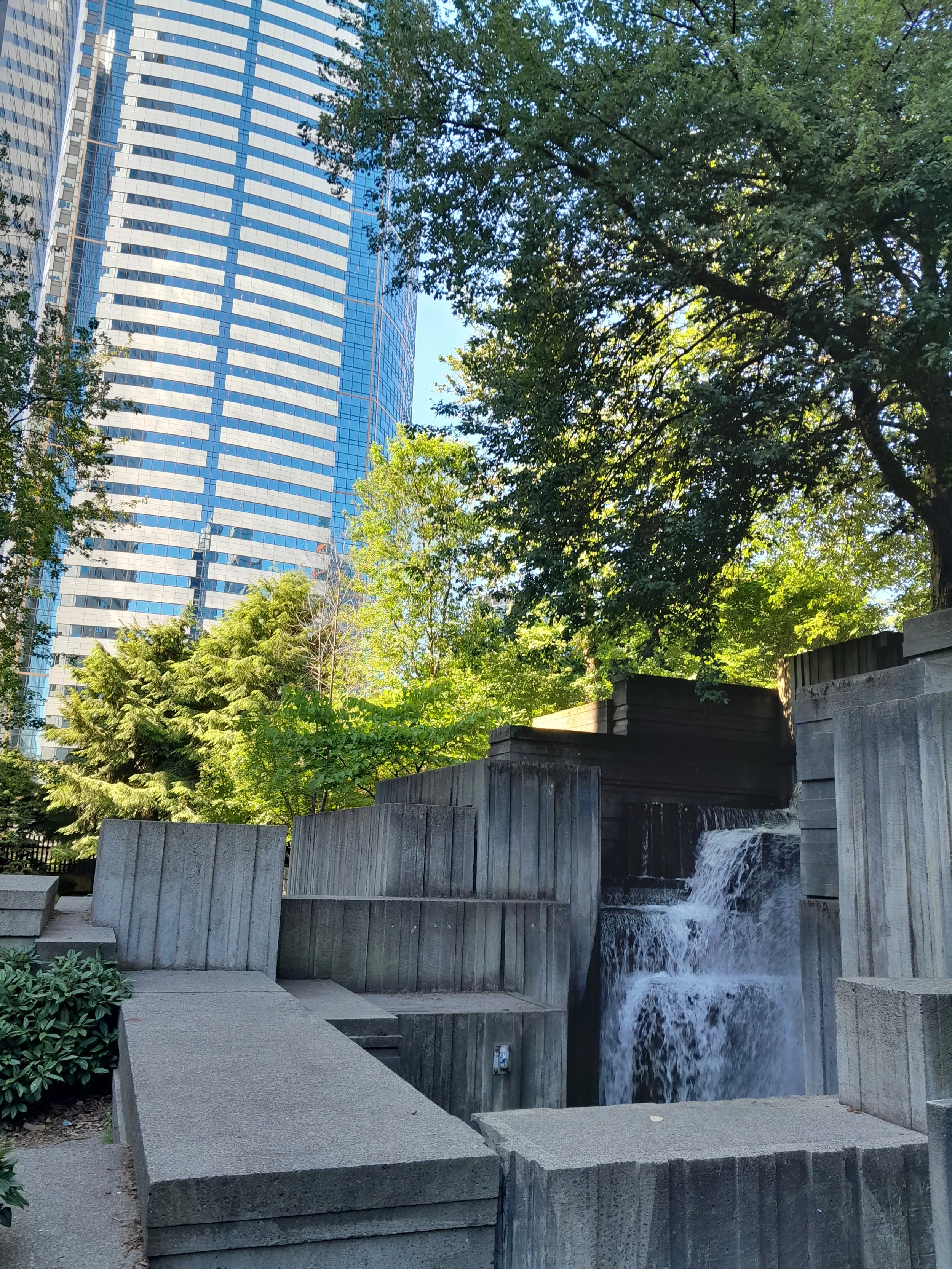Top 3 Parks to Visit: Freeway Park
**This is Part Two in a series regarding Seattle-area parks presented by David Quicksall.
In 1960, John Steinbeck drove through Seattle in his pick-up truck with his dog Charley. It had been many years since he had last visited the city, and the mark of progress weighed heavily upon him—especially as manifested by the newly constructed I-5 freeway:
I remembered Seattle as a town sitting on hills beside a matchless harborage—a little city of space and trees and gardens, its houses matched to such a background. It is no longer so…The highways eight lanes wide cut like glaciers through the uneasy land…This Seattle had no relation to the one I remembered. The traffic rushed with murderous intensity…Along what had been country lanes rich with berries, high wire fences and mile-long factories stretched…
—Travels With Charley, 1961
Steinbeck’s description of a glacier-like I-5 cutting through the city is an apt simile for the impact the freeway had on Seattle's cityscape. In effect, its construction created an actual chasm that severed downtown from the First Hill/Capitol Hill neighborhoods to the east. When construction on the freeway was completed in 1966, many public-spirited Seattleites and King County officials began talking about constructing a “lid” over the portion of I-5 between Union and Seneca Streets to reconnect First Hill to Downtown. As with Gas Works Park, the city consulted with a renowned landscape architect. This time it was Lawrence Halprin, who had just published a book called Freeways in which he imagined new and innovative ways to regard the nation’s traffic architecture.
Along with project designer Angela Danadjieva, Halprin created the highly innovative (and first of its kind) Freeway Park. Seattle Parks and Recreation describes Freeway Park like this:
Located between 6th and 9th Avenues, Freeway Park is bounded on the north by Union and on the south by Spring Street. To the east is First Hill, to the west the park overlooks Seattle's financial center. Freeway Park provides a space where residents, shoppers, downtown office workers, hotel visitors and the whole array of people from all backgrounds who make up the downtown population may come together to enjoy the social elements of a city park.

